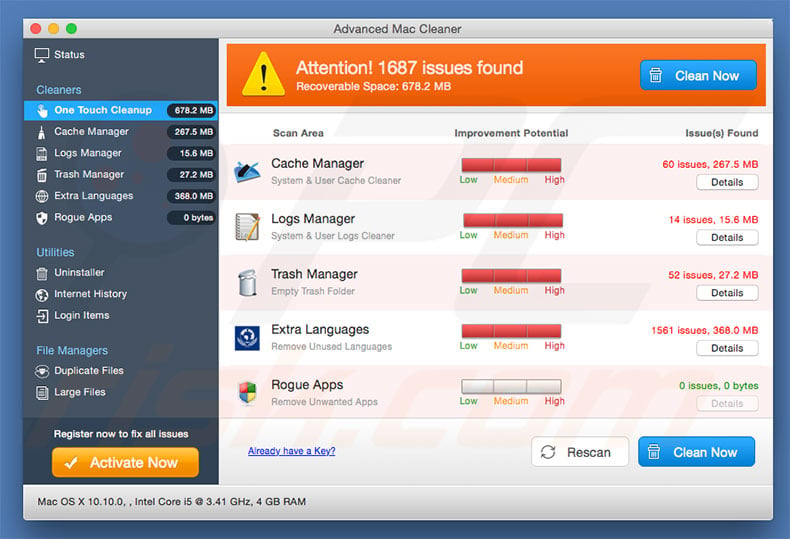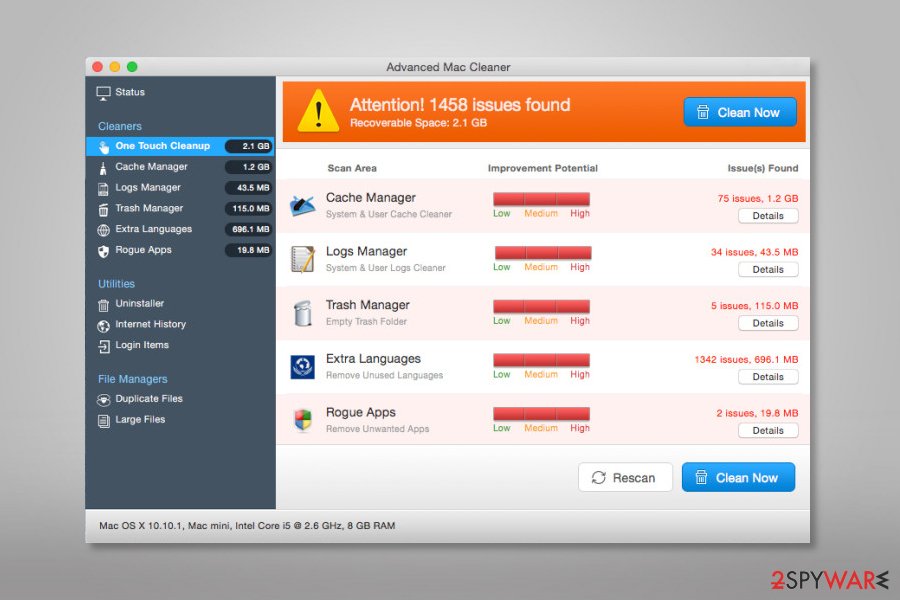Advanced Mac Cleaner uses aggressive marketing, which might involve warnings and threateningly-sounding prompts, even if everything may be OK. Windows Command Line Quiz 1. Being well versed in the Windows Command Prompt is a must for almost all CompTIA certifications, and nearly all IT jobs will require you to be knowledgeable with Windows. This tool is also an advanced Mac cleaner virus as well. Mac doesn't have much of a virus problem but they can too infect with malware and ransomware. This tool can take care of this problem. This best Mac cleaner also clears the ram, uninstall apps and more. It will improve your Mac performance. Terminal is a Mac command line interface. There are several advantages to using Terminal to accomplish some tasks — it's usually quicker, for example. In order to use it, however, you'll need to get to grips with its basic commands and functions.
The Antimalware Service Executable process (also known as MsMpEng.exe) plays an integral role in Windows Defender service. The process is responsible for allowing Windows Defender to monitor potential threats. However, it is also infamous for consuming lots of system resources rather than its fair share of processing power. So, why does it cause so much CPU usage? Well, there are two main reasons:
What Is Advanced Mac Cleaner Command Line Named
The first option in the Terminal is the classic 'find' command that is common to many Unix systems, which will recursively walk a specified folder hierarchy and search items for a given name pattern. Fixed an issue where Microsoft Defender for Endpoint for Mac was sometimes interfering with Time Machine; Added a new switch to the command-line utility for testing the connectivity with the backend service mdatp -connectivity-test Added ability to view the full threat history in the user interface (can be accessed from the Protection history.
- The Antimalware Service Executable process constantly scans files, connections & other programs in real-time to provide overall protection.
- Its Full Scan feature slows down the entire system performance, and you may face lags, delays, and frequent hangs, while the CPU continues to occupy more resources than ever.
So, if you find an Antimalware Service Executable process running in your Task Manager & occupying high memory on Windows 10, just remember, it is not a virus, and you can perform plenty of workarounds to fix the high disk usage caused by MsMpEng.exe service.
Corbyn barker checks in. A long-time Corbyn supporter, Mr Carden released the following statement this week: - 'Jeremy is a kind and decent man who has campaigned against racism and injustice all his life. His place is in.
Here's one user sharing concerns about the aforementioned error on Reddit Forum:
How To Fix MsMpEng.exe On Windows 10 High Disk Usage Issue
You'll be pleased to know that the following methods can quickly resolve the issue:
METHOD 1- Turn Off Windows Defender Or Replace It
Turning off Windows Defender might help resolve the high disk usage caused by the Antimalware Service Executable process. But this will make your system unprotected. Hence, we suggest installing third-party Antivirus Software like Systweak Antivirus that can help you cover multiple kinds of threats, viruses, malware & malicious content. The antivirus software also scores excellent when it comes to false positives (blocking unharmful applications as being potentially threatening).
Unlike other security solutions for Windows 10, Systweak Antivirus scans the system thoroughly and rapidly. The threat database gets regularly updated; hence no existing or new threat can harm your system. To enjoy real-time protection with Systweak Antivirus, install it now!
Know more about Systweak Antivirus, right here!
METHOD 2- Use Group Policy Editor To Stop MsMpEng.exe Process
Another helpful fix to get rid of the Antimalware Service Executable High CPU Usage issue on Windows 10 is through Group Policy Editor. You just need to make certain tweaks, just follow the steps mentioned below:
- Launch Run window (Press Windows key + R) altogether.
- Type gpedit.msc in the dialog box and hit the Enter button.
- Once the Group Policy Editor window appears, you need to follow the path:
Computer Configuration/Administrative Templates/Windows Components/Windows Defender Antivirus/Real-time Protection
- You need to double-click on the entry: Turn off real-time protection.
- On the next window (Turn off Windows Defender Antivirus), choose the Enable option.
- Hit the Apply button, followed by OK to complete the process!
Now that you have successfully disabled Windows Defender, you'll be able to resolve high disk usage caused by the MsMpEng.exe service.
METHOD 3- Add Antimalware Service Executable To Exclusion List
Windows Defender checks every file on the computer during security scans, including the Antimalware Service Executable process. This can result in exciting interactions and system lags. To prevent the error, you can exclude the process from scanning.

- Launch system settings & navigate to Update & security module.
- Hit the Windows Defender option and Under the Exclusions header, click on the Add an exclusion button.
- Head towards the Processes tab and click on the (+) Exclude a .exe, .com, or .scr process.
- Enter the executable file name: MsMpEng.exe & press the OK button.
Hopefully, you'll be able to resolve the high disk usage problem on Windows 10.

- Launch system settings & navigate to Update & security module.
- Hit the Windows Defender option and Under the Exclusions header, click on the Add an exclusion button.
- Head towards the Processes tab and click on the (+) Exclude a .exe, .com, or .scr process.
- Enter the executable file name: MsMpEng.exe & press the OK button.
Hopefully, you'll be able to resolve the high disk usage problem on Windows 10.
METHOD 4- Repair Corrupted/Missing System Files
Sometimes identifying and repairing corrupted and missing system files can help resolve the high CPU usage on Windows 10 caused due to the Antimalware Service Executable process. You can either run the SFC /scannow command line in the Command Prompt to do so or install a third-party PC Cleaner Tool like Advanced System Optimizer. Its Smart PC Care feature can help you scan your entire hard drive, locate potentially harmful files, and repair them quickly so that you can resolve common PC errors without any hassles.
Hopefully, you shouldn't experience the annoying high disk usage problem on Windows 10 caused due to the Antimalware Service Executable process!
What Is Advanced Mac Cleaner
RELATED ARTICLES:
| For more queries or any kind of assistance, connect with us on our Social Media handles, Facebook, or Twitter. We would love to hear your feedback and resolve your Windows, Mac, Android, iOS, and other issues! |
